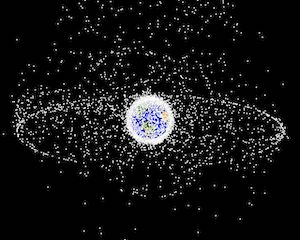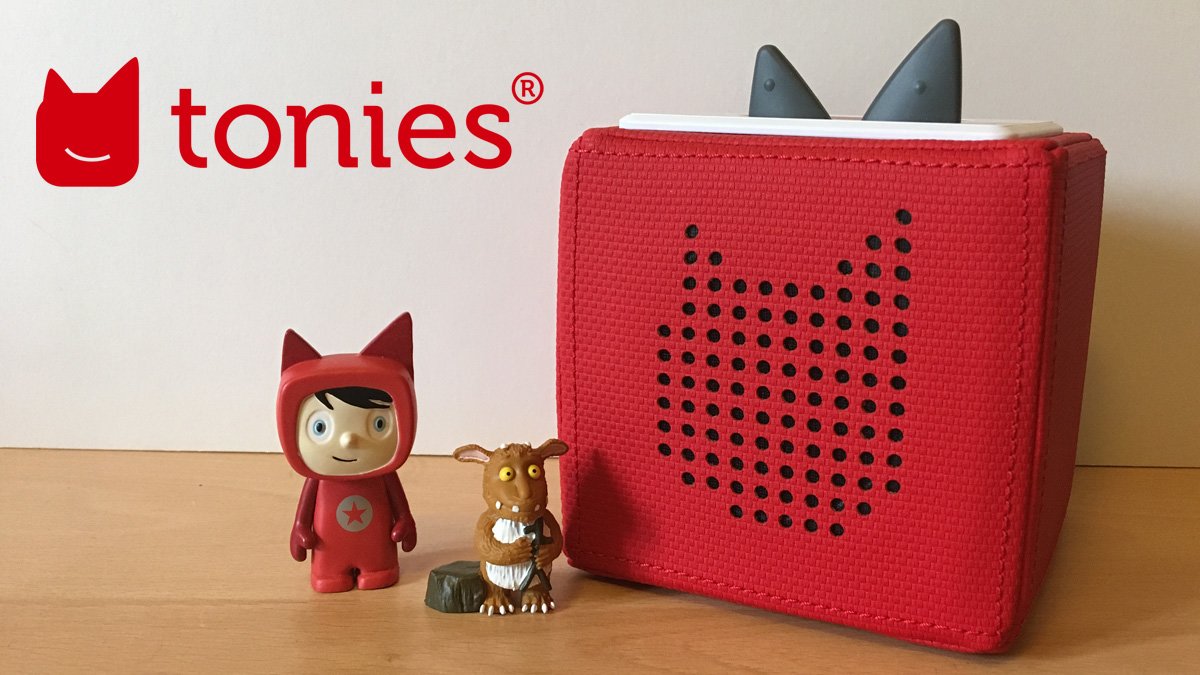Space junk was not something Lottie Williams ever expected to make history for.
One early January morning in 1997, she was strolling with her friends through an Oklahoma park when a fireball streaked across the sky. It was an odd thing, but she and her companions thought little of it. Surely it was just a shooting star. Suddenly, however, she felt a tap on her shoulder. She turned to see who it was…and no one was there. When she glanced down, she saw a nondescript piece of litter by her foot.
It was this single piece of litter, just inches across, that would change her life.
“The weight was comparable to an empty soda can,” Williams said just after the incident. “It looked like a piece of fabric except when you tap it, it sounded plastic.”
Remembering the “shooting star” from minutes before, Williams suspected there was more to this melted mass of something than met the eye. Her suspicions were confirmed when the piece was sent to scientists at the Center for Orbital and Reentry Debris, who said it was part of the fuel tank from a Delta II rocket which had been launched the year before. Other pieces of the rocket, larger than what hit Williams, were recovered in Texas a couple hundred miles away.
Lottie Williams became the first person to be hit by space junk. And statistics say she won’t be the last.
Humans have been launching things into space for over sixty years. During that time, we’ve left behind some trash: defunct satellites, launch stages, bits of debris that have broken off various equipment. All these things are floating around our planet in different orbits. We can’t see this junk that’s in space, but it’s there. And it’s not going to just go away.
According to NASA, there have been over 9,000 satellites launched into orbit over the brief course of human history in space, and of those, over 5,000 are still up there. Two-thirds of those satellites are no longer functioning. Well, so what? one might ask. Our orbit is a big place, isn’t it? There’s more room up there than on the surface of the entire Earth–much more room, in fact. The problem is, it’s not just about area.
The average satellite in space travels at a speed of about 7,000 miles per hour. Other objects–debris set into motion by collisions, for example–can travel much faster. When things crash into each other in orbit, debris can fly off. As careful as scientists and mission specialists are when they launch things and insert them into certain orbits, all this debris travels in unpredictable directions. It crashes into other crafts and creates more debris, which careens off to collide into other things, and those things break into more pieces. This cascade effect is called the Kessler Syndrome, a theory proposed by NASA scientist Donald J. Kessler in 1978.
Kessler Syndrome suggests it’s possible for orbit to become so cluttered with debris that it would make launching things into orbit extremely risky. Every satellite in orbit, as well as every rocket and manned mission launched, has the potential to create debris. There are currently more than 130 million pieces of debris floating up there, according to the European Space Agency, moving in all directions, at various speeds, all faster than anything we can see traveling on Earth.
“It’s a mess up there,” says Harvard-Smithsonian astrophysicist Dr. Jonathan McDowell. He would know. He releases a weekly report that lists new debris that’s being tracked, as well as any launches or new satellite activity.
According to McDowell, having functioning satellites in orbit is vital to today’s society. People use satellites for GPS, cell service, to check the weather, to watch television. There are many small things we take for granted that wouldn’t be possible without satellite technology. Massive amounts of data are bouncing back and forth between Earth and satellites.
“This is data key to keeping civilization going,” McDowell says.
One of McDowell’s colleagues, Dr. Martin Elvis, also at Harvard-Smithsonian, agrees. He says now more than ever, satellites are important in ways we might not even realize. He specifically mentioned the GPS timing involved in financial trading. If GPS was disrupted, the stock market would be in utter chaos. There are climate change tracking satellites scientists are using to make discoveries in this area vital for our future, and there is a new technology being developed where satellites can record the black box data from airplanes, so if a plane crashes, the physical black box no longer needs to be retrieved in order to figure out what happened. There is a new system of weather prediction that uses satellites to look at the atmosphere at an angle, enabling meteorologists to see different things to make more accurate predictions. All these developments will be for nothing if an inch-long screw that fell off an old broken satellite hits the new satellite at 7,000 miles per hour.

The irony of all this is not lost on Douglas Kowalewski, a climate and Earth scientist at Worcester State University in Worcester, MA. He notes that the very things we’re using to make advances in science and technology are part of what’s causing the problem to begin with. He calls it a catch-22. But science isn’t only hurt when satellites collide and break. It will also be affected if we have to slow or reengineer our launch protocols in order to mitigate the issue.
“There’s a bit of a race going on in science,” he says, “to be the ones to get information first. If the US increases space junk regulations, there’s no guarantee other countries will follow. If we slow down, will other countries pass us by?”
According to NASA, the International Space Station has already had to shift course several times to avoid space debris. Astronomers have to time their observations and studies to avoid orbital interference. Launches of new equipment have to be planned very carefully in order to steer clear of collisions. Avoiding traffic in orbit is getting harder than ever with more private companies launching mega-constellations of satellites numbering in the thousands, like SpaceX, Amazon, and OneWeb. And of course, the more traffic there is in orbit, the more possibilities there are for collisions and more debris. McDowell mentions a broken satellite currently in orbit with almost a full load of the rocket fuel hydrazine on board. A ticking time bomb, he calls it.
William Hansen, a geographer and environmental scientist at Worcester State University, says that space debris “has the potential to impact the timely launch and lifetime of satellites I use in research and education.” He not only uses remote sensing data from satellites for his own scientific research, but to teach science to undergraduates students as well.
As if all of this isn’t worrisome enough, debris can be the cause of national security concerns. Remember, a large number of the satellites in orbit are used for military purposes, to spy on other nations. If a satellite blows up in orbit, was it an accidental collision due to so much debris in orbit, or was it an act of hostility?
These were the questions Russian military and scientists were asking themselves in 2013, when one of their satellites was severely damaged. It turns out it was hit by debris from a defunct Chinese satellite, which China intentionally destroyed in 2007, creating a large and chaotic cloud of debris in orbit. When the satellite was first hit, Russia was on guard, wondering if their communications were under attack. Even after they ascertained what had happened, questions remained as to who was responsible for repairs. It was a situation which could have escalated rapidly.
It’s not only military action that could cause tension between nations. Satellites can be extremely expensive. Equipment on board the Hubble Space Telescope, the International Space Station, and other high tech scientific crafts costs billions of dollars. One rogue piece of space junk could render these crafts useless, possibly beyond repair. Who would be responsible for paying for the damage? There are no policies in place to designate responsibility in cases like this.

It’s easy to see how big a problem space junk could become. Most scientists and government agencies agree it’s something that needs to be addressed. However, wanting to clean things up and actually doing it are two different matters. There have been many ideas proposed to try to mitigate the situation, from giant nets to capture debris, to lasers to shoot it into smaller pieces, to ion beams to push the debris into a “garbage orbit.” Testing these ideas, however, is extremely difficult on Earth because there is no way to replicate the conditions in orbit exactly. Building a system to test in orbit is a risky and expensive venture, especially if it were to fail. That would just lead to more space junk.
Cleanup itself can contribute to international issues as well. Jonathan McDowell explains that it’s a delicate situation, because no one owns an orbit itself, yet the satellites are owned by various nations. Even when a satellite is broken, if one nation removes it from orbit, the country that owns that satellite could be offended. That satellite could hold sensitive information that is a matter of national security. Alternatively, what’s to stop another country from just removing another’s spy satellites from orbit, just because they want to keep secrets?
Orbital debris is a problem that belongs to the world, not just one nation, and it will require international cooperation to fix it. With more and more objects being launched into space, NASA and the European Space Agency estimate that by 2209, with business as usual, orbit will become unusable. This means that nothing will be able to be safely launched, and our night sky will become a streak of satellites streaming overhead. Like the trash island that is currently floating in the Pacific Ocean, orbit around Earth will become a shell of garbage, with more and more equipment being destroyed every day. Our systems of finance, communication, weather prediction, entertainment, education, security, and science will all be disrupted. And all of this trash will eventually deorbit and fall to Earth, bringing with it toxic substances like the rocket fuel hydrazine and heavy metals.
Lottie Williams was lucky. She only received a tap on the shoulder. But perhaps that tap should serve as a reminder to us that what goes up must come down.
The next reminder might not be so gentle.




